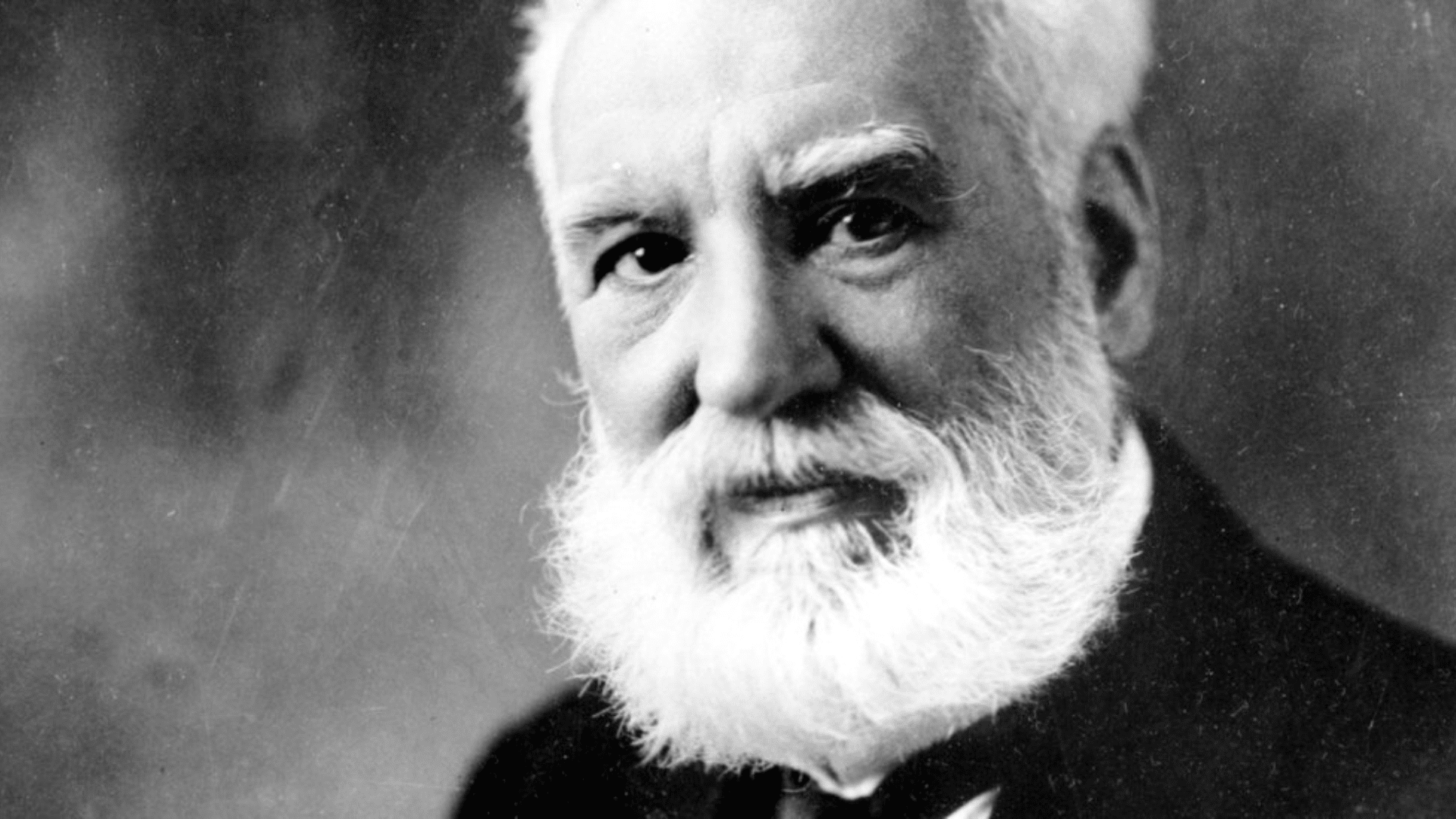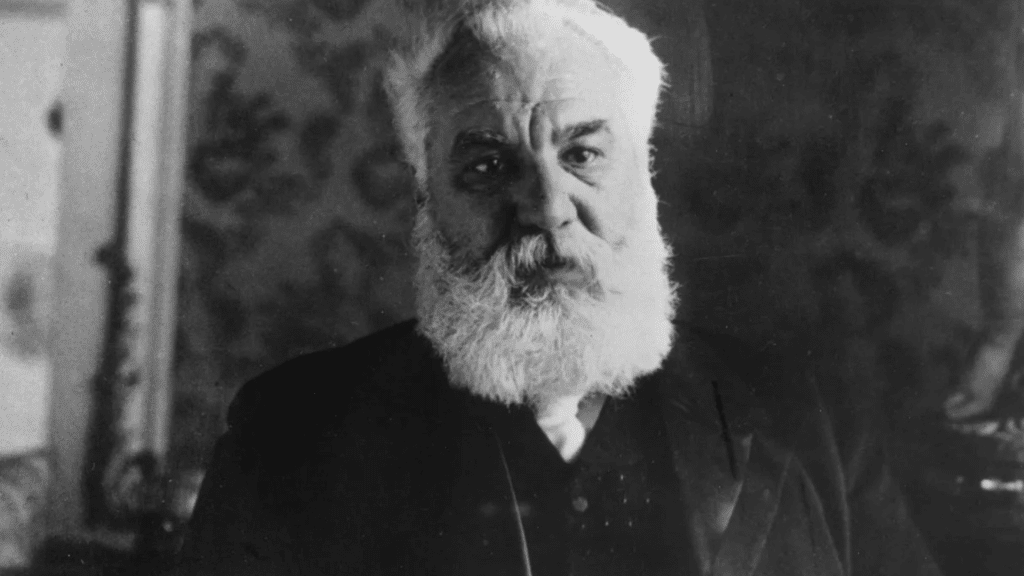When you hear the name Alexander Graham Bell, you probably think “telephone,” right? I did too.
But the truth is, his story goes far beyond that single invention. He was the kind of person who never stopped asking questions, and I think you’ll find that really inspiring.
As you read, you’ll get a closer look at the man himself, not just the inventor everyone talks about.
I’ll share some surprising details that connect to things you use every day, and maybe even make you see him in a new way. So, let’s kick things off with a look at who he was as a person.
The Man Behind the Inventions
Alexander Graham Bell was a Scottish-born scientist, inventor, and teacher whose work shaped modern communication.
Born in 1847 in Edinburgh, he grew up in a family deeply interested in speech and sound. His father and grandfather both studied the mechanics of the human voice, and that curiosity rubbed off on him.
After moving to North America, Bell balanced his time between teaching and experimenting. He had a natural drive to solve problems and a habit of chasing bold ideas that others thought impossible.
His inventions stretched far beyond telephones, touching fields like medicine, flight, and sound technology.
Bell was also a lifelong learner. He valued education, encouraged exploration, and believed science should serve people in practical ways.
While he’s best remembered for changing how the world communicates, his true legacy lies in the wide scope of his imagination and the impact it left on everyday life.
Fun Facts About Alexander Graham Bell

If you’re curious about the life of a true innovator, these fun facts about Alexander Graham Bell reveal surprising details about the man behind the telephone, his inventions, and the legacy he left behind.
1. He Received His Middle Name as a Birthday Gift at 11
Alexander wasn’t always called Alexander Graham Bell. His parents gave him the middle name “Graham” as a special birthday present when he turned 11 years old.
Most kids get toys or books, but Bell got a name instead! This gift made his full name unique and memorable for the rest of his life.
2. Bell Made the First Telephone in 1876
In 1876, Bell amazed the world by creating the first telephone. Before that, people could only send letters or use the telegraph.
His new invention let voices travel through wires, so friends and families could actually talk to each other from far away. This idea changed the way people communicated forever.
3. Bell Thought the Photophone Was More Important Than the Telephone
Out of all his inventions, Bell liked the photophone the most. This clever machine sent voices using beams of light instead of wires.
He believed it was more important than the telephone because it showed that sound could travel in brand-new ways. Today, this idea connects to modern technology like fiber optics.
4. He Wanted People to Answer the Phone With “Ahoy!”
When Bell invented the telephone, he thought people should answer calls by saying “Ahoy!” just like sailors did.
He believed it was a cheerful way to start a conversation. But over time, Thomas Edison’s suggestion of “Hello” became more popular. That’s why today we all say “Hello” instead of “Ahoy” when we pick up the phone.
5. He Moved From Scotland to America to Invent Big Things
Bell’s story began in Scotland, but his biggest achievements happened after moving to Canada and the United States.
It was there that he worked on inventions like the telephone, photophone, and even flying machines. The move gave him the opportunities and space he needed to test bold new ideas.
6. The First Phone Words Were to His Helper Watson
The very first words ever spoken on a telephone were by Bell in 1876. He called his assistant, Thomas Watson, and said, “Mr. Watson, come here, I want to see you.”
It may sound simple, but those few words proved his invention worked, starting a whole new way for people to communicate.
7. He Made the First Call Across the Country in 1915
In 1915, Bell made history again by completing the first cross-country phone call. He spoke from New York, and Thomas Watson answered all the way in San Francisco.
This call showed that telephones could connect people across thousands of miles, making the world feel a lot smaller and more connected.
8. Bell Made a Breathing Machine to Help People Breathe Better
Alexander Graham Bell cared about people’s health as much as inventions. He worked on creating a breathing machine to help patients who had trouble getting enough air.
This early idea was a step toward devices we now call ventilators. His design showed how his curiosity reached beyond phones into saving lives.
9. He Built a Metal Detector to Try to Save a President
In 1881, Bell invented a metal detector to try to save President James Garfield, who had been shot. Bell’s machine worked, but doctors didn’t realize the hospital bed’s metal springs were interfering with it.
Sadly, the invention couldn’t help the president, but it later became important for security and medical use.
10. Bell Made Giant Kites That Could Lift People
Bell wasn’t only interested in telephones – he also dreamed of flying. He built giant kites strong enough to lift a person into the air.
These experiments helped him and his team learn more about flight, and they added to the growing knowledge that later made airplanes possible.
11. He Improved the Phonograph to Play Music Better
Bell worked on improving the phonograph, an early invention that could play recorded sound. He wanted music and voices to sound clearer so people could enjoy listening better.
His improvements helped this new kind of machine spread to more homes, letting families experience recorded sound for the first time.
12. Bell Taught Deaf Students Before He Became an Inventor
Before becoming a famous inventor, Bell worked as a teacher for the deaf. He created ways to teach speech and sound using vibrations and tools.
These teaching experiences not only helped his students but also gave him the knowledge that later led to the invention of the telephone.
13. His Wife Nicknamed Him “Alec”
Alexander Graham Bell had a loving nickname given by his wife. She called him “Alec,” and the name became his personal favorite.
Even though the world knew him as a famous inventor, to his family and close friends, he was simply Alec, showing a softer and more personal side to his life.
14. Phones Went Silent for One Minute When He Died
When Bell passed away in 1922, people honored him in a very special way. Every telephone across North America went completely silent for one full minute.
This tribute showed just how important his invention had become and how deeply people respected the man who made long-distance conversations possible.
15. Bell Helped Start the National Geographic Society
Bell wasn’t only an inventor; he also loved exploration and learning.
He helped create the National Geographic Society, which later became famous for its magazines filled with amazing photos and stories about science, animals, and faraway places.
His role in starting it showed his passion for discovery and knowledge.
16. He Created a Club to Build Better Airplanes
Bell was fascinated by flying and wanted to learn more about it. In 1907, he started the Aerial Experiment Association (AEA), a group of inventors who worked together to design and test airplanes.
They built models, studied flight, and even created the Silver Dart, which made the first powered flight in Canada in 1909. Bell’s teamwork approach showed he wasn’t just an inventor but also a leader who inspired others.
17. He Experimented With Early Air Conditioning
Bell was curious about comfort in hot weather. He designed a primitive air-cooling system that used fans, water, and salt to lower indoor temperatures.
While it wasn’t practical for everyday use, the idea showed how he contributed to inventions beyond communication and flight
18. Bell Built Super-Fast Boats Called Hydrofoils
Alexander Graham Bell didn’t just focus on telephones – he also experimented with boats.
He created special boats called hydrofoils that could rise above the water and move very quickly. In 1919, one of his hydrofoils set a world speed record.
This showed how Bell’s love for inventing stretched into many different areas of science and technology.
19. His Mother and Wife Were Deaf and Inspired His Work
Bell’s greatest inspiration came from his own family. Both his mother and wife were deaf, and their experiences motivated him to study sound, speech, and hearing.
This personal connection gave his scientific work a mission of empathy and purpose.
20. He Invented a Hearing Test Machine Called the Audiometer
Bell created the audiometer, a special machine that measured how well people could hear. It helped doctors test hearing ability and gave them a way to understand different levels of sound.
Modern versions of the audiometer are still used today in hearing tests, showing how Bell’s invention continues to help people over a century later.
21. His Real Voice Was Found on a Wax Recording
In 1885, Bell spoke into a recording machine and saved his voice on a wax disc. For many years, nobody knew it still existed.
Over a hundred years later, scientists rediscovered the disc and played it back, allowing the world to hear Bell’s real voice for the very first time.
22. Bell Raised Sheep and Bred Them for Twins
Bell had interests far beyond telephones. On his farm, he raised sheep and worked on breeding stronger animals. He even focused on developing a type of sheep that could have twins more often.
This showed that Bell’s curiosity stretched beyond inventions, proving he loved exploring nature, farming, and science in all its forms.
23. He Won the Volta Prize and Built a New Laboratory
In 1880, Bell was awarded the Volta Prizeby the French government for inventing the telephone.
Instead of keeping the prize money, he used it to create the Volta Laboratory in Washington, D.C. This research center gave him the chance to work on more experiments and continue developing new scientific discoveries.
Myths and Controversies
The story of Bell and the telephone has its share of debates. Several inventors were chasing similar ideas, which led to questions about who truly deserves credit.
Myth: Bell was the only person to invent the telephone.
Reality: Antonio Meucci built a prototype voice device called the telettrofono years earlier. Many believe his work paved the way, though he never secured a patent.
Myth: Bell’s invention was completely original.
Reality: Other inventors were experimenting with sound transmission at the same time. What set Bell apart was his quick move to secure the U.S. patent in 1876, which cemented his place in history.
Myth: Edison and Bell never crossed paths in their work.
Reality: Because Edison and others were testing sound devices too, credit for certain ideas often got blurred. This overlap caused confusion about who created which improvements.
Myth: Inventions happen in isolation.
Reality: The telephone is proof that big breakthroughs often happen in parallel. Different inventors reached similar results independently, showing how innovation is rarely the work of just one person.
These debates don’t erase Bell’s impact, but they remind us that recognition often depends on timing, patents, and publicity as much as the invention itself.
Lasting Impact and Modern Connections
Alexander Graham Bell’s influence didn’t end with his lifetime. The ideas he had continue to shape the world we live in today. His curiosity pushed technology forward, and many of the tools you use every day can be traced back to his vision.
- Global Communication Networks: Bell’s work laid the groundwork for today’s phone systems, video calls, and internet-based communication that keep people connected across the globe.
- STEM Inspiration: Generations of inventors, engineers, and scientists point to Bell as proof that bold ideas can change the world. His story continues to motivate students to explore science and technology.
- Everyday Technology: From wireless headsets to smart home devices, the basic principles behind Bell’s experiments still appear in the gadgets you rely on daily.
- Hearing Health Advancements: His passion for sound and hearing research opened doors to modern audiology, leading to today’s advanced hearing aids and cochlear implants.
- Innovation Culture: Beyond inventions, Bell’s legacy shows how curiosity, experimentation, and teamwork create lasting progress. His approach to problem-solving remains a model for innovators everywhere.
Bell may be remembered most for the telephone, but his true gift was showing the world how one person’s imagination can move forward into multiple areas of modern life.
Conclusion
Alexander Graham Bell’s story shows how curiosity and determination can ripple across generations. He wasn’t just an inventor of machines; he was a thinker who connected science with everyday life.
His willingness to experiment in many directions reminds us that progress often comes from daring to test the unknown.
Even today, the influence of Alexander Graham Bell stretches beyond communication, shaping technology, medicine, and how we solve problems. If his life teaches us anything, it’s that innovation starts with asking the right questions.
Want to keep learning about history, inventions, and inspiring figures? Read more blogs on the website for fresh insights.











